Speech to the Seattle Rotary Club to Support Marching Band Programs in the New Orleans Public Schools
SUMMARY: David Freedman's speech to the Seattle Rotary Club to support marching band programs in the New Orleans Public Schools
BY: David Freedman, General Manager, WWOZ-FM, New Orleans, LA
Seattle, WA — March, 2007
Thank you for inviting me here today. And before I say another word, let me express my deep, deep gratitude to the people as well as the charitable institutions and corporations of Seattle for their enormous generous response to the situation in New Orleans. One of your local radios stations KEXP-FM, here in Seattle, was one of the first in the country to send my radio station money to put us back on the air. They did this without our asking.
The Seattle Rotary is well-known for its leadership in the work that the Rotary organization does throughout this country. Members of the New Orleans Rotary have worked with my station in the past.
We see your invitation to speak to you today as another act of concern on your community’s part — it energizes us to take on the task of restoring our city.
I am the General Manager of a public radio station in New Orleans, WWOZ-FM. We serve the music community of New Orleans, and I worry about the possibility that we may not have a community to serve in the future.
Were you to visit New Orleans today, you would still enjoy the performances of some of the most creative musicians in the world. 15% of the city was not affected by the 17 breaches of the Federal levees. The part of New Orleans that was not destroyed happens to include the tourist zone — the “sliver by the river,” as we call it.
But even as we speak, 18 months after the Flood, there are miles and miles of the city which remain uninhabited. We are still missing close to a quarter-of-a-million of our people — that’s half the population of the city of New Orleans! When you drive through the affected areas, you will see block upon block of empty houses, some not even gutted, interspersed are empty lots where houses once stood, there are some trailers, and, there may be one or two houses completely restored, beautifully landscaped.
This is what you will see if you were to go to New Orleans today. But what you can’t see, and I believe most of our governmental leaders don’t see either — is the destruction that is taking place right now, and which may well have a much greater implication, not just for New Orleans, but the country as a whole.
I’m sure you’ve heard of the loss of the Louisiana wetlands – a football field every 45 minutes – 20 square miles a year. That’s one thing that we are still having trouble seeing.
But we’re also in the process of losing this country’s cultural wetlands. Let me explain what I mean by that.
The geography and history of New Orleans have combined to create one of the most richly textured and unique cultures of any American city. Cuban, Brazilian and Latin rhythms arrived through the port from the south. Delta blues made its way down the Mississippi River, Cajun and Zydeco music entered from the bayous of southwestern Louisiana, and the incredibly complex rhythms of Africa were brought from the east by the slave population. It’s quite a heady mix.
Congo Square, just outside the French Quarter, was the only place in America where slaves were permitted to retain their customs. On Sunday mornings they would drum and dance, and it was those rhythms that eventually formed the basis of jazz.
During the Civil War, brass bands were popular on both sides of the lines. The difference is, that the musicians who returned north, even to this day, are still playing the notes that are written on the page, probably even playing many of the same tunes.
But in New Orleans those Brass Bands were heavily influenced by African traditions – call and response, improvisation, virtuoso rhythmic treatment — all of which eventually led to the development of jazz. The music then went up river and the rest, as they say, is history. Jazz is perhaps the one uniquely American music form that we have, one that is admired and emulated throughout the world.
New Orleans has always been noted for its vibrant popular music culture. The incubators of that culture were the churches and the schools. There are dynasties of musical families in New Orleans who for generations have passed on the city’s traditions – those same African rhythms heard in Congo Square – that are the signature of New Orleans music — whether it is jazz, rhythm and blues or hip-hop, which in New Orleans, we call bounce.
It was the marching bands in the schools where those traditions were passed on from one generation to another, by a sort of guild system. While a well-written curriculum could supply you with the fundamentals of musicianship — you just simply couldn’t find the things I’m talking about in a book. It was in the memory and the heart of those band directors.
Before the Flood, there were 121 public schools and many more private and parochial schools. Each one had a music program. There were scores of marching bands, and, in New Orleans, it was considered higher status to play in a band than to be on the football team. Every high school had its own, unique rhythmic cadences by which they could be identified. It was from these ranks that New Orleans has continued to feed so many great musicians into our national culture.
But after the Flood, the State of Louisiana took the initiative to sieze the city’s dysfunctional and corrupt public school system to set up charter schools in its place. Today there are only 5 public schools in city, around 30 charter schools and 30 or so schools being run by the state. There are perhaps only 3 or 4 marching bands in the entire city. Music education in New Orleans is an after-thought at best. New Orleans — the city whose very soul and signature is its music.
And this is where I return to the landscape I painted for you just a moment ago. You know, if you go down to the Farmer’s Market here in Seattle, those luscious Fuji apples and beautiful tulips didn’t grow on the water front. They grew in the fields outside the city. And in the same way, the music of New Orleans doesn’t come from its music clubs, which are still alive and well at this point. No, the music is grown in the schools in the surrounding neighborhoods — the 6th, 7th, 8th and 9th wards – these are the cultural wetlands of New Orleans, and, really, of America.
And unless we can get music programs back in the city’s schools, there is no future for New Orleans music.
Joan Houston and James McCafferty and the Committee for New Orleans Cultural Continuity have understood this, and have dedicated themselves for the past year in doing something about it. James and Joan have been down to New Orleans three or four times and have worked with a number of significant cultural and philanthropic organizations.
Today with us from New Orleans is the President and CEO of the Greater New Orleans Foundation – Ben Johnson. The Greater New Orleans Foundation is at the center of some of the most significant work that is being done in New Orleans, since it works with almost all of the major philanthropists in the city and around the country. It does the same kind of work that your Seattle Foundation does here.
Today, a coalition of organizations in New Orleans including WWOZ, the New Orleans Jazz and Heritage Foundation, the Musicians’ Union, the New Orleans Musician’s Clinic, the Grammy Foundation, the Greater New Orleans Foundation and the Tipitina Foundation, working in conjunction with the Committee for New Orleans Cultural Continuity, here in Seattle, are launching a project called “Jazz Dreams and New Orleans” to locate those band directors, the tradition bearers who have been scattered across this land, bring them back to the city, re-build the band programs in the schools, and re-insert the precious cultural DNA of this city’s and this country’s heritage into our children’s lives before we lose it forever.
You have a handout that goes into more details about the program, and if you are interested in getting more involved you can visit the website: www.jazzdreams.org for more information. I personally invite each and every one of you to come to our reception later at Crèpe de Paris at 5:30 this afternoon, where Ben Johnson and I can answer questions and give you more specifics. The time and place are also on your handout.
I, Ben, James and Joan, along with other members of the Organizing Committee will remain after this program in case you would like to speak to us then.
You know, before the Flood, my radio station was located in Armstrong Park, just 2 blocks from Craig Elementary School. And every day, we would watch those kids walk home from school blasting their trumpets and trombones on the sidewalks. We didn’t realize it, at the time, but we were watching New Orleans be recreated in front of us. And until we can see those kids walking home playing their instruments, there will be no more music of significance from New Orleans. And we all will be the poorer for it.
That is why we have developed this project. To make a difference.
Thank you for your interest and your involvement.



















